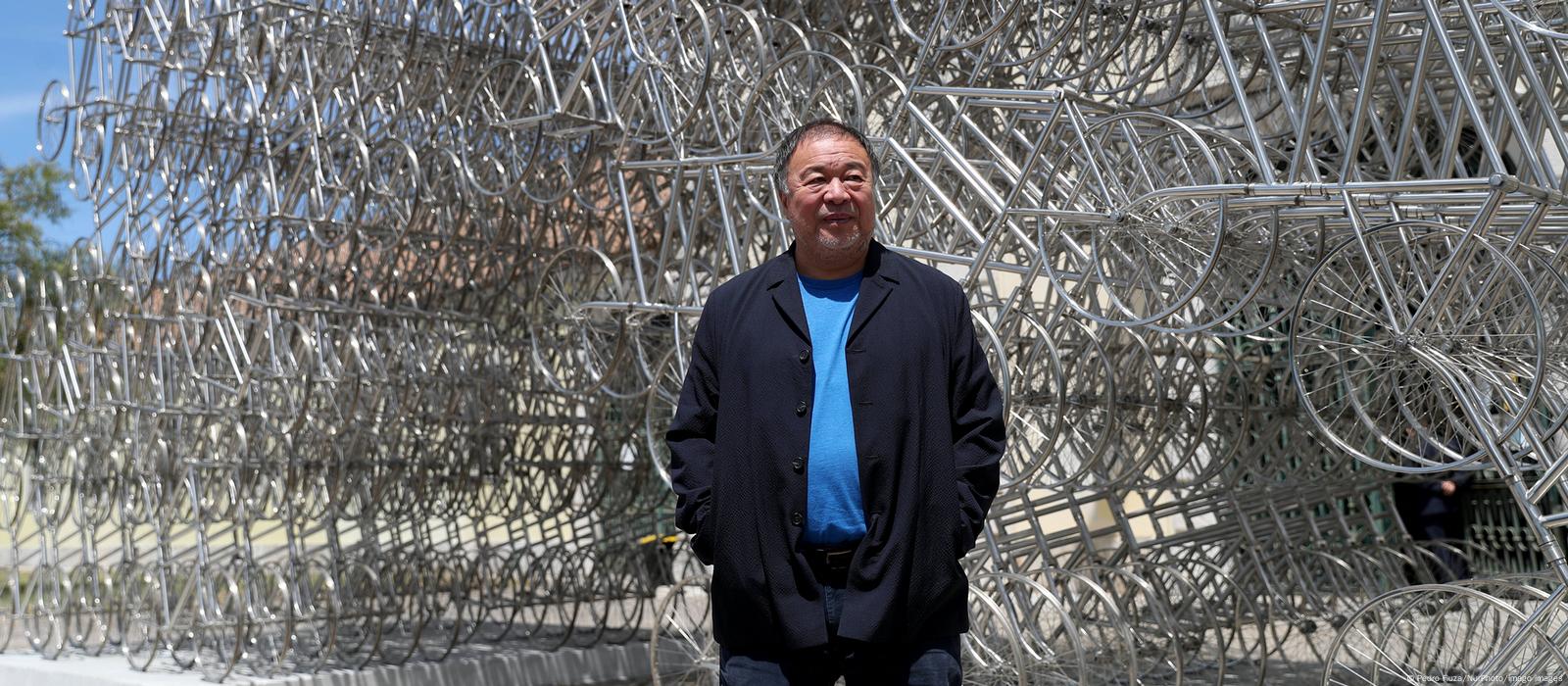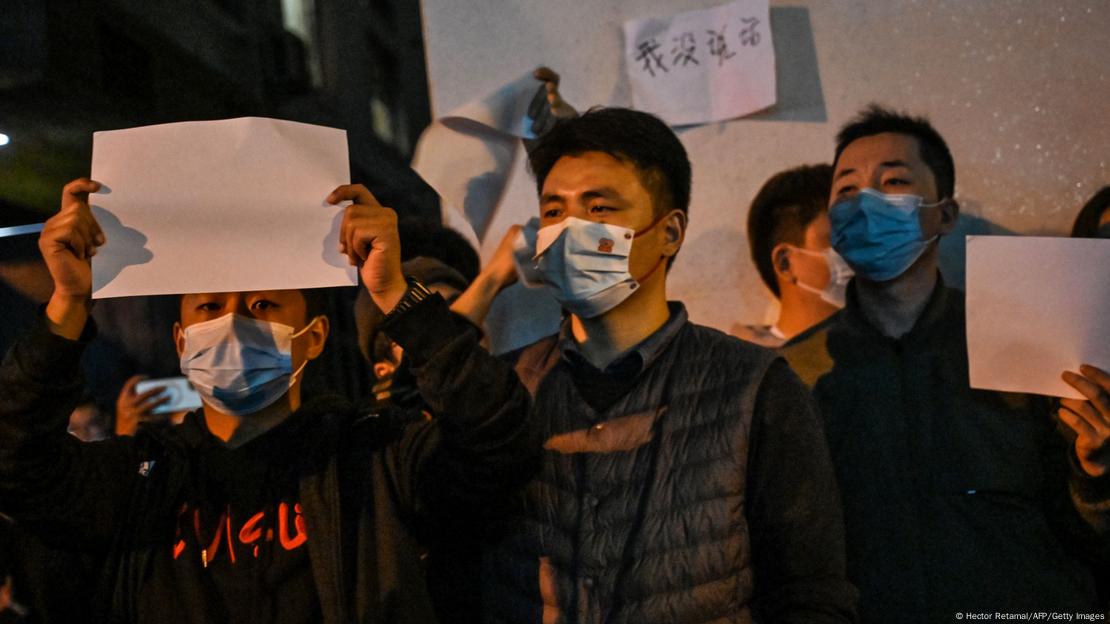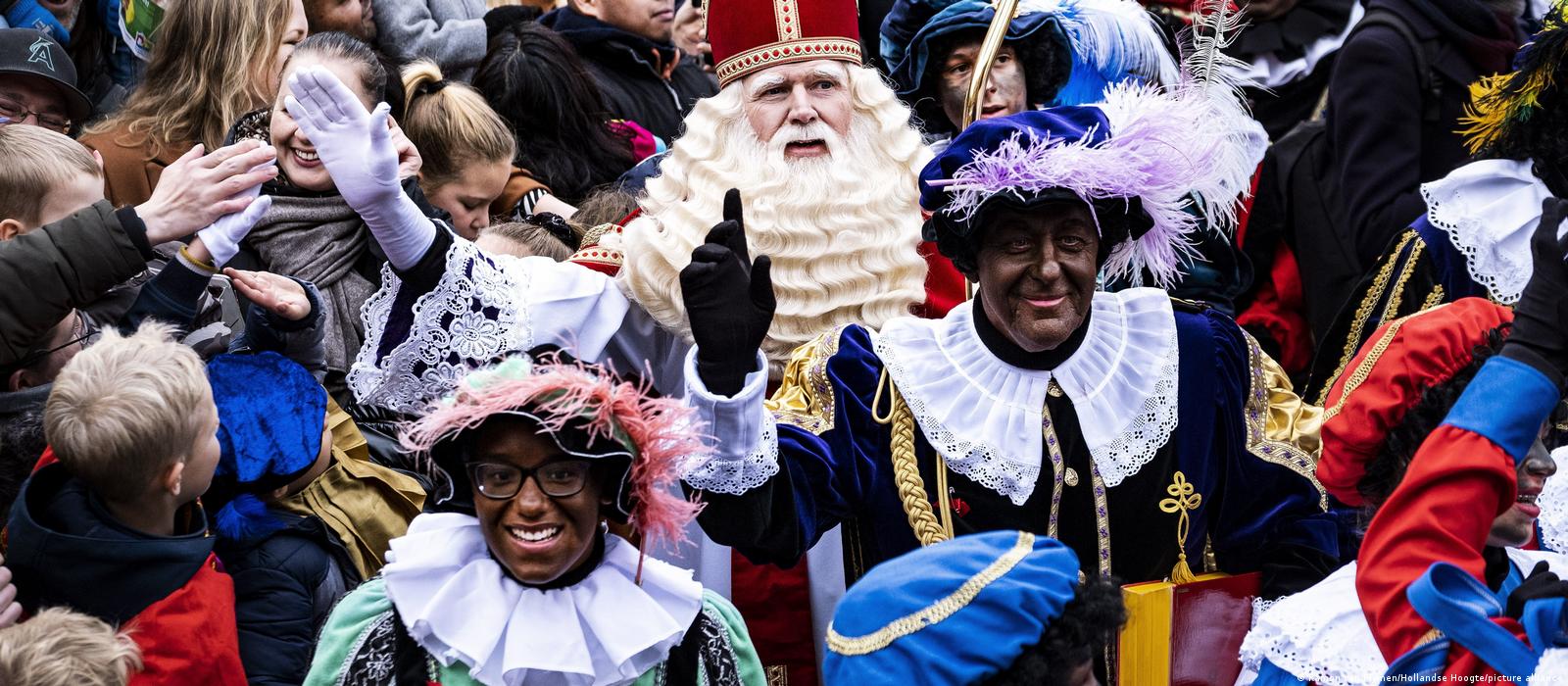
NETHERLANDS
'Black Pete': Dismantling a racist tradition
Astrid Benölken
12/05/2022
December 5, 2022
Over the past decade, attitudes have changed towards the blackface figure accompanying Saint Nicholas in the Netherlands. But the debate is still on.
https://p.dw.com/p/4KPUJ
The arrival of Sinterklaas, the Dutch figure based on Saint Nicholas, is celebrated with different festivities in the Netherlands. Starting in mid-November, crowds of children and parents enthusiastically gather to greet the saint as he arrives in their city or village by steamboat, horse or even hot air balloon.
Landing with him are his little helpers, the so-called Zwarte Piets ("Black Pete"), traditionally depicted as a character with dark skin.
In Amsterdam alone, hundreds of Piets join Sinterklaas on his boat, or out in the streets, handing out Peppernut cookies, dancing, waving and fooling around.
They are everywhere until the eve of December 6, handing out presents or sneaking them into children's shoes. They even report for their own daily news show on TV.
Controversial blackfacing
For activists like Jerry Afriyie, November and December is the most difficult time of the year. That is because Zwarte Piet is usually played by white Dutch people who paint their face black, might wear afro or curly wigs, paint their lips plump, and often wore golden earrings in the past.
For Afriyie, this is clear-cut blackfacing, a racist display of Black people that should have long been abolished. Not only does it make Black people the target of mockery, he also sees the tradition as a symbol of the Netherlands' colonial past — and the lack of historical reappraisal of it.
The controversy surrounding the Zwarte Piet character has been growing in the country for years. But for fans of the figure like Marc Giling, the accusations of racism are misleading and "a threat to one of the most important traditions from the Netherlands." Giling himself has dressed up as Zwarte Piet for parades in the past and is one of the founders of the Sint & Pietengilde, a community of Zwarte Piet supporters.
Decades of complaints
Within the Dutch Black community, Zwarte Piet has been viewed critically for decades, explains Mitchell Esajas, an anthropologist and founder of the Black Archives in Amsterdam.

Historian Elisabeth Koning has researched the roots of the Black Pete figureImage: Privat
In the 1980s, for example, Dutch-Surinamese actor Gerda Havertong told children on an episode of Sesame Street: "I'm tired of being called Zwarte Piet all the time." But overall, complaints like these fell on deaf ears, historian Elisabeth Koning says.
Then the 2010s came around and the first protests gained traction.
By that time, smartphones and social media allowed images of the figure to be seen worldwide, creating additional support for the new generation of Black Dutch people expressing their disapproval.
"We have every right to be seen as fully Dutch people — just like every other child born in this country. We deserve the same respect, the same opportunities, the same space to be able to be heard," says Jerry Afriyie.
In 2011, along with others, he mobilized a first successful wave of protests. As part of an art installation, he walked through Dutch cities with a T-shirt and posters denouncing the racism of the figure.
Afriyie and his group were violently arrested during Sinterklaas' arrival to the city of Dordrecht, and eyewitnesses filmed the scene and the disproportionate level of force used on the activists. The protest movement slowly took off.
Protesters of theAnti-Zwarte-Piet movement have received death threats in the past, and their actions are still met with violent reactions.
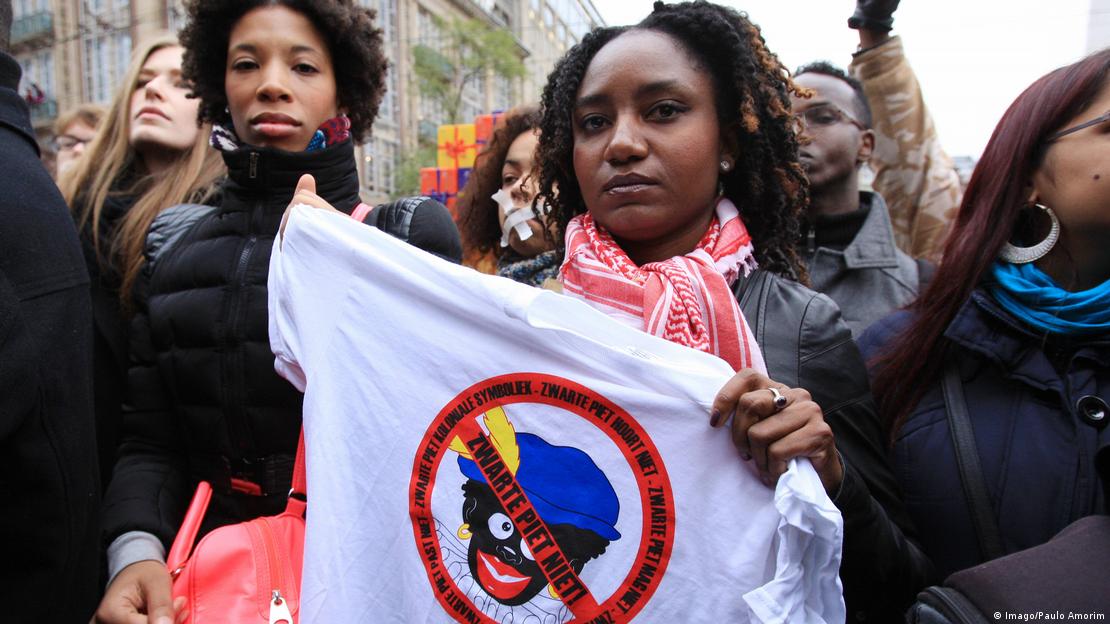
Protesting against Black Pete can be dangerous
Image: Imago/Paulo Amorim
In November this year, activists of the Kick out Zwarte Piet initiative and Amnesty International were attacked as they gathered to demonstrate during the fest of Sinterklaas' arrival to Staphorst, where Zwarte Piet is still very common. A mob of Zwarte Piets stopped the activists on the streets, threw eggs at them and demolished their cars.
Blackface or a dark devil figure?
Zwarte Piet supporter Giling explicitly distances himself from mobs and being put into "a political right corner."
But he believes there shouldn't be a blackface debate in the first place. According to him, it's rather a misunderstanding. Black Pete is not based on Black people, he claims, but rather derives from pagan folklore.
Just like the German Krampus, a demon-like dark figure accompanying Saint Nicholas, the Dutch Sinterklaas figure was originally accompanied by a dark creature that eventually took a human shape — the only thing remnant of that being the paint on the face that was "coincidentally" black.
Due to these roots, Zwarte Piet cannot be racist, Giling argues.
"There are prints with devil-like depictions of Krampus — definitely, I agree," historian Koning says. But that doesn't change the fact that the present-day depiction of Zwarte Piet, as the likeness of a Black Moor from Spain, started appearing in the 19th century, she adds.
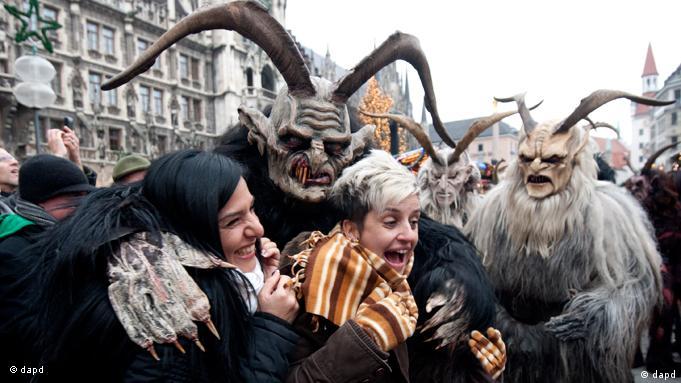
The Krampus figure has little to do with Black Pete, says historian Elisabeth Koning
Image: dapd
"Culture doesn't develop in a vacuum," Koning says. Blackfacing as a stereotypical depiction of Black people was not an isolated phenomenon of American Minstrel shows, but was also very common in the Netherlands as a former colonial power.
'Chimney Pete' replaces Black Pete
By now, in most schools, at many parades and on TV, Black Petes have been replaced by so-called Schoorsteenpieten, or Chimney Petes. Their faces are dirtied with soot, resulting from their trips through the chimney to deliver presents.
Some cities have also started including grey, yellow or purple colored Petes to their parades in addition to black ones.
Afriyie claims that he does not care about what the change to Zwarte Piet will look like — as long as all the racist elements are gone, and the Netherlands doesn't end up with a "Zwarte Piet Light."
Giling also says that he does not mind change. He however believes that it might take away from the magic if Black Petes wear less make-up, since children could recognize them. Also, he also does not see the need to find a compromise, since he doesn't agree with the blackface criticism in the first place.
But for Afriyie, it remains clear: "If the tradition is destroyed when we take out the racism, then it is a tradition we should have never handed over to our children."
When the protests began in 2011, nine out of 10 Dutch people thought that the appearance of Zwarte Piet was alright.
Prime Minister Mark Rutte, who had even dressed up as Zwarte Piet himself several times, said: "Zwarte Piet is just black."
Today, about half of the Dutch think that the figure of Zwarte Piet needs to be changed.
And Rutte, who is still prime minister to this day, said after the protests over the death of George Floyd that he too had changed his mind. He doesn't want to ban the depiction of Zwarte Piet — but he believes that in a few years from now, the traditional depiction of the character will have disappeared on its own.
This article was originally written in German.
BLACK PETER ORIGINATES WITH THE RISE OF THE DUTCH IMPERIAL FLEET, ITS ROLE IN THE SLAVE TRADE AND THE RISE OF HOLLAND AND ITS BOURSE (STOCK EXCHANGE) DURING THE 15TH CENTURY AT THE BEGINING OF CAPITALISM IN EUROPE
EP















